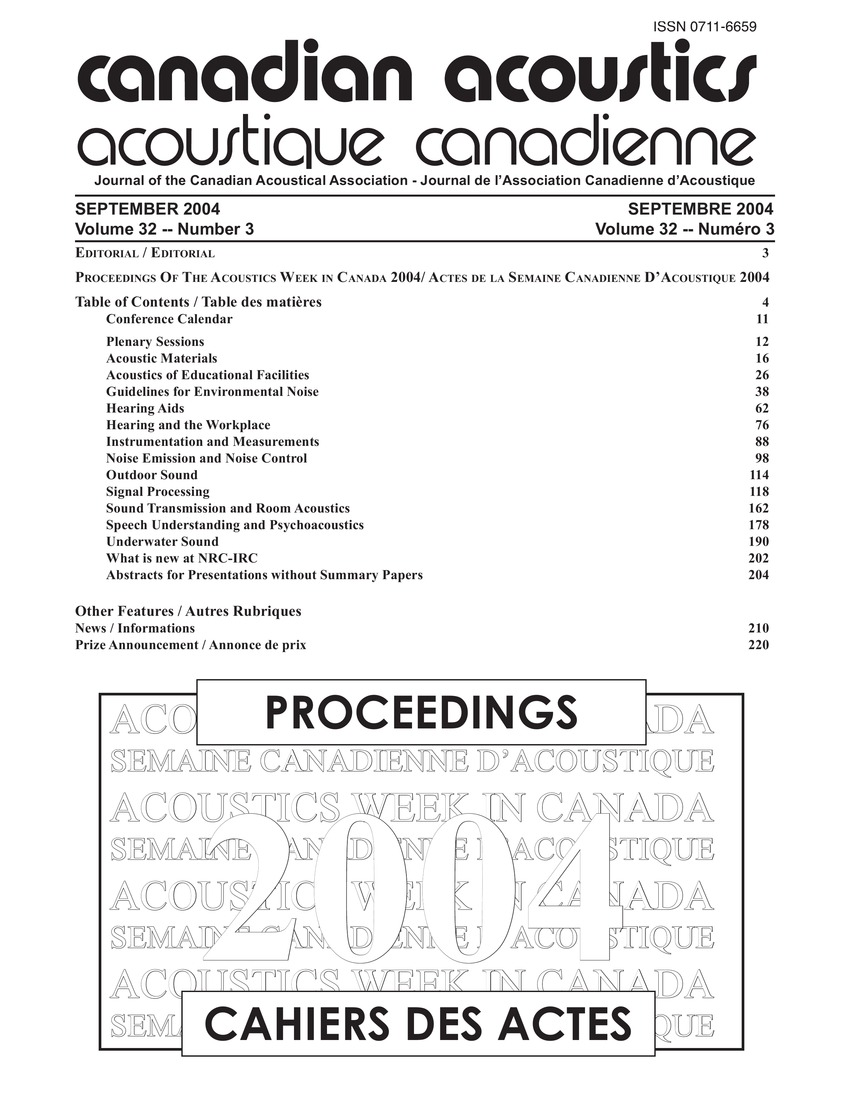Perceived spatial separation induced by the precedence effect releases chinese speech from informational masking
Keywords:
Image analysis, Information analysis, Pattern recognition, Signal processing, Signal to noise ratio, Spectrum analysis, Speech intelligibility, Spurious signal noise, Chinese speech, Energetic maskers, Informational masking, Noise maskingAbstract
The precedence effects to induce perceived spatial separation of target Chinese speech from informational or energetic maskers is discussed. The study also investigated the advantages of perceived spatial separation with two different sizes. The new approach used Chinese nonsense sentences as a speech signals and obtained results that are comparable to those reported from Freyman et al's study. The results show that advantage of perceived separation in releasing speeches from masking could extend to tonal Chinese which is not consistent with the prediction of two channel models.Additional Files
Published
How to Cite
Issue
Section
License
Author Licensing Addendum
This Licensing Addendum ("Addendum") is entered into between the undersigned Author(s) and Canadian Acoustics journal published by the Canadian Acoustical Association (hereinafter referred to as the "Publisher"). The Author(s) and the Publisher agree as follows:
-
Retained Rights: The Author(s) retain(s) the following rights:
- The right to reproduce, distribute, and publicly display the Work on the Author's personal website or the website of the Author's institution.
- The right to use the Work in the Author's teaching activities and presentations.
- The right to include the Work in a compilation for the Author's personal use, not for sale.
-
Grant of License: The Author(s) grant(s) to the Publisher a worldwide exclusive license to publish, reproduce, distribute, and display the Work in Canadian Acoustics and any other formats and media deemed appropriate by the Publisher.
-
Attribution: The Publisher agrees to include proper attribution to the Author(s) in all publications and reproductions of the Work.
-
No Conflict: This Addendum is intended to be in harmony with, and not in conflict with, the terms and conditions of the original agreement entered into between the Author(s) and the Publisher.
-
Copyright Clause: Copyright on articles is held by the Author(s). The corresponding Author has the right to grant on behalf of all Authors and does grant on behalf of all Authors, a worldwide exclusive license to the Publisher and its licensees in perpetuity, in all forms, formats, and media (whether known now or created in the future), including but not limited to the rights to publish, reproduce, distribute, display, store, translate, create adaptations, reprints, include within collections, and create summaries, extracts, and/or abstracts of the Contribution.


